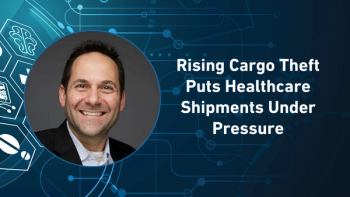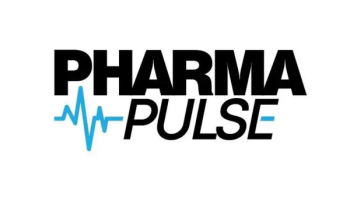
Tackling ESG Data Gaps in Supplier and Third-Party Reporting
In the third part of his video interview with Pharma Commerce Editor Nicholas Saraceno, Nate Chenenko, principal with Ducker Carlisle details how manufacturers can overcome the data gaps from suppliers and third parties when aiming for sustainability certifications or ESG reporting compliance.
In a video interview with Pharma Commerce, Nate Chenenko, principal with Ducker Carlisle, sheds light on the critical issue of Scope 3 emissions and their growing relevance in the pharmaceutical industry, particularly across warehousing, packaging, and outbound transportation.
Chenenko defines Scope 3 emissions as all indirect emissions that occur after a pharmaceutical product is manufactured. While many companies focus on the sustainability of raw material sourcing and production (classified as Scope 1 and 2), Scope 3 encompasses everything that follows: storing products in warehouses, packaging them, transporting them to market, and ultimately, their end-of-life disposal. Although these post-manufacturing steps may not seem like the largest contributors to a company’s carbon footprint, they are significant, and frequently overlooked.
What makes Scope 3 emissions particularly challenging for pharma manufacturers is their indirect nature and the reliance on external logistics and supply chain partners. However, Chenenko emphasizes that these areas closely align with the day-to-day operations of supply chain teams, making Scope 3 an accessible and actionable area for emissions reduction. For instance, optimizing packaging materials, choosing greener transportation methods, and reducing energy consumption in warehouses are all tangible ways companies can drive impact.
Importantly, ignoring Scope 3 emissions not only undermines comprehensive sustainability efforts but also excludes a large portion of stakeholders responsible for distribution and logistics. Chenenko argues that targeting Scope 3 emissions allows for faster, more practical sustainability gains than commonly assumed, and presents a strategic opportunity for pharma companies to align environmental goals with operational priorities.
In conclusion, Chenenko advocates for a more holistic sustainability strategy that fully integrates Scope 3 emissions. By engaging supply chain stakeholders and taking action across the post-manufacturing lifecycle, pharmaceutical companies can make meaningful progress toward their environmental goals while enhancing overall supply chain efficiency.
He also comments on the specific metrics can pharma companies realistically track today to measure distribution-related sustainability performance; how manufacturers can overcome the data gaps from suppliers and third parties when aiming for sustainability certifications or ESG reporting compliance; best practices for reducing greenhouse gas emissions across distribution channels without disrupting supply chain efficiency;how regulatory expectations and customer pressure will shape sustainability efforts in pharma logistics in the future; and much more.
A transcript of his conversation with PC can be found below.
PC: How can manufacturers overcome the data gaps from suppliers and third parties when aiming for sustainability certifications or ESG reporting compliance?
Chenenko: There's two ways you can attack this challenge of data gaps. One is that we're seeing with companies that we work with a lot of success incorporating reporting requirements into requests for proposals or the procurement process. For example, let's think about transportation. When you bid out a transportation lane, you can insert in the request for proposal, you need to tell us the amount of fuel you consume, or tell us the number of trailers you ship, or even better yet, tell us these trucks’ DOT numbers so that we can match them up with the fleet sustainability index, which is a company unrelated to ours that does a really good job tracking transportation emissions. Don't be afraid to put that information directly into requests for proposal, because that helps motivate everybody.
Then, your carrier in this case will want to work with you because they they'll want to give you that data because they feel like they need it to win the business. In practice, we find the best way to do that is to ask for the information and say it scores you extra points in the procurement process, but it's not required, because we don't want to put you in a situation where you're not seeing low-cost bids simply because that company, for whatever reason, cannot comply with the sustainability certification. You still want to get that information in, and then you can make a decision based on that. So leg one one is pushing vendors, carriers, suppliers, a little bit more to give you a little bit more information. The best place to do that is in the procurement process or during a contract refresh.
Leg two of the strategy is selecting certifications that can work with you based on the amount of data that you actually have. So when you select the type of certification, the best certification programs out there are pretty flexible, and they will allow you to get a certification. It may not be the top tier, it may not be platinum level or diamond level, but it will allow you to get certified even though you don't have all of the data that maybe the most sustainability-minded company has. You can show some progress, and you can incentivize improvements within your company and still get a certification without just getting rejected completely because you lack one of 100 data points and you have the other 99.
Newsletter
Stay ahead in the life sciences industry with Pharmaceutical Commerce, the latest news, trends, and strategies in drug distribution, commercialization, and market access.




